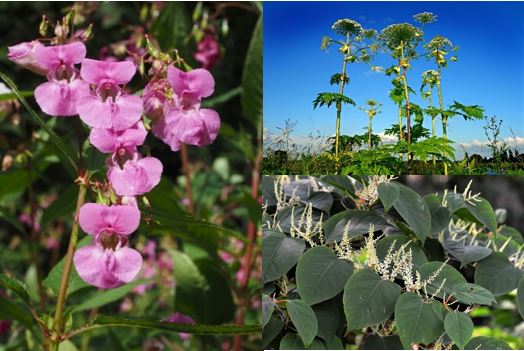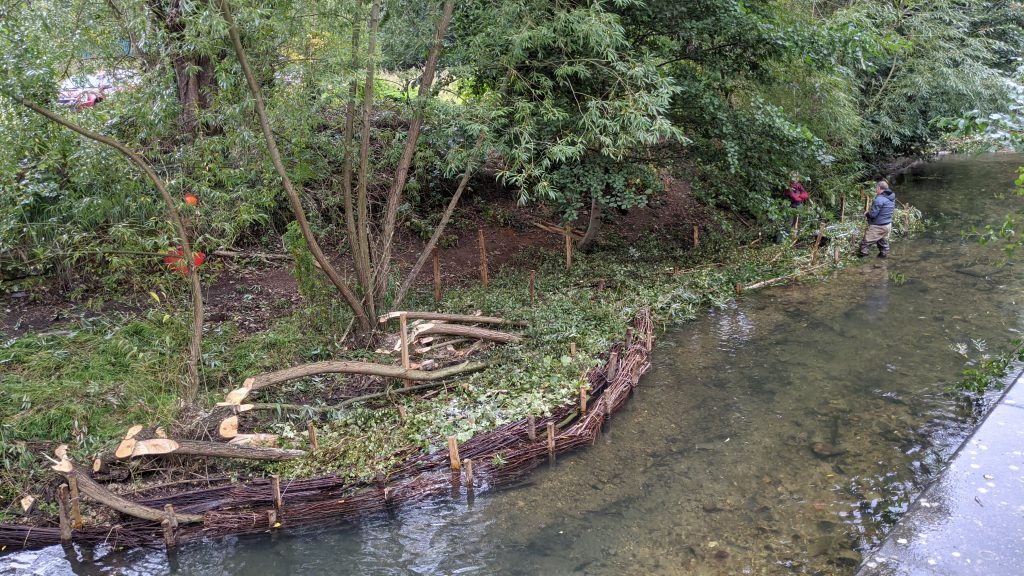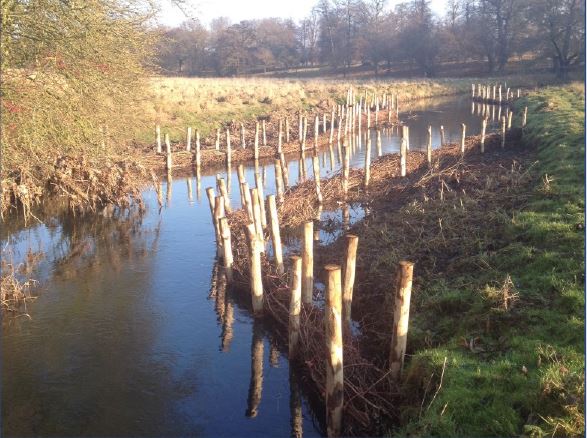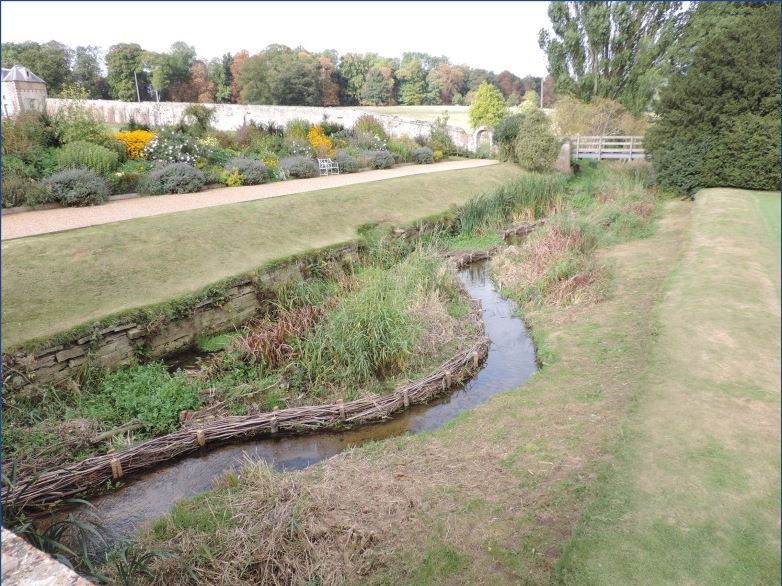Photo by Andrew Chick
Recent, Ongoing and Future Projects along the River Witham and River Slea
Upper Witham Invasive Plant Species Project
This is a brilliant catchment wide project that looks to remove dangerous invasive species from the environment.
Linconshire Rivers Trust is working with Local Angling Clubs and RiverCare, with the support of the Environment Agency, to stop the spread of these invasive species through the Upper Witham Catchment.
These species, Himalayan Balsam, Japanese Knotweed and Giant Hogweed, outcompete native species and threaten our ecosystem.
As these plants are widepsread and grow rapidly along river courses, they damage our waterways and endanger local wildlife.
To learn more about this project and how you can help visit https://lincsrivers.org.uk/upper-witham-invasive-plant-species-project/

Invasive plants being targeted, from left to top right: Himalayan Balsam, Giant Hogweed and Japanese Knotweed.
Dysart Park In-Channel Improvements

Berm Creation along the River Witham at Dysart Park using hinged trees and brushwood faggots.
In September 2020, exciting restoration works were undertaken by Lincolnshire Rivers Trust and Lions Environmental Contractors to improve the section of the River Witham along Dysart Park, Grantham.
In order to create the best habitat for local wildlife, small trees were hinged into the river to create berms, increasing light and introducing woody material to the river.
The many benefits of creating these berms include providing refuge for fish and invertebrates as well as introducing natural variation in the river to speed up water in some areas, creating riffles.
To learn more about this amazing project, visit https://lincsrivers.org.uk/adding-a-little-wiggle-to-the-witham/
Belton House In-Channel Improvements
In 2016 and 2017, the Environment Agency and National Trust collaborated to produce a hugely beneficial project along a section of the River Witham at National Trust's Belton House.
The Project's aim was to create a more meandering channel with increased flow speed and variation, creating essential pool-riffle sequences along the channel.
By adding gravel, lowering the bank and installing faggot-fronted berms these crucial in-channel features could be created. These natural features have many benefits, including increasing and improving habitat for spawning fish and our native white clawed crayfish.
The wetland creation at Belton House within the Witham/Slea Blue Green Corridor Project will build on these previous works, encouraging the river to develop more natural features and reconnect to the floodplain.
To learn more about this in-channel improvement project, click here.

Faggot-fronted berms installed along the River Witham at Belton House.
Wyndham Park In-Channel Improvements, 2017
Along the River Witham in Wyndham Park, Grantham, two berms were created to increase river variation and sinuosity. On the left-hand bank looking downstream a soft berm was created consisting of brushwood faggots, chestnut posts and coir matting.
This coir matting enabled marginal and aquatic plant species to establish, increasing the diversity of flowering plants which has benefitted local invertebrates and pollinators.
On the right-hand bank looking downstream a hard berm was created for public access, enabling the community to engage safely with this section of the river course in low flows. These berms are designed to be drowned out in high flows.
Alongside this berm creation, part of this project involved
the addition of gravels to the riverbed to provide habitat for aquatic invertebrate
species and spawning sites for brown trout. Working in conjunction with this addition
of gravels, the berms installed create variation in flow, allowing faster
sections of flow to keep river bed gravels clean and clear of sediment, allowing
fish eggs to survive in redd sites.
 Completed in-channel berms after construction in low flows
Completed in-channel berms after construction in low flows
Berms along the River Witham drowned out in higher flows
Easton Walled Gardens In-Channel Improvements

The River Witham through Easton Walled Garden after the project was completed.
From 2013 to 2015, the Environment Agency partnered with the Easton estate and their farm tenants, Stoke Rochford Estate and Wild Trout Trust to transform a section of the River Witham that had become heavily eroded and over widened.
In order to improve this section of the river, the restoration included weir removal, channel narrowing and bank reprofiling.
One of the problems this section faced was heavy erosion from livestock which had hugely eroded the banks and pushed a large quantity of sediment in the river. To combat this, as well as reprofiling the banks, fencing was placed to prevent livestock reaching the section in the future.
As well as benefitting coarse fish species and native white clawed crayfish by improving in-channel habitat, the works created an aesthetic river channel in keeping with the Grade II Listed Historic Park and Garden.
To learn more about this project, click here.
Aubourn Rock Ramp Fish Pass
Completed in 2016, the Environment Agency collaborated with Auborn Estate to produce an amazing rock ramp fish pass where an impassible weir had previously stood.
By constructing a natural looking fish pass more essential in-channel variation is created and in-channel species will be able to migrate upstream back to their spawning habitats.
This was successfully achieved by removing the weir and using sheet piling, large locally sourced rocks and excavation along specific points in the river bed to create a series of stepped pools.
Benefitting those important in-channel species, such as Brown Trout, by not only allowing them to migrate upstream but also giving them habitat and areas of refuge from high flows and predators.
To learn more about this project, click here.

After the completion of the Rock Ramp Fish Pass along the River Witham.






